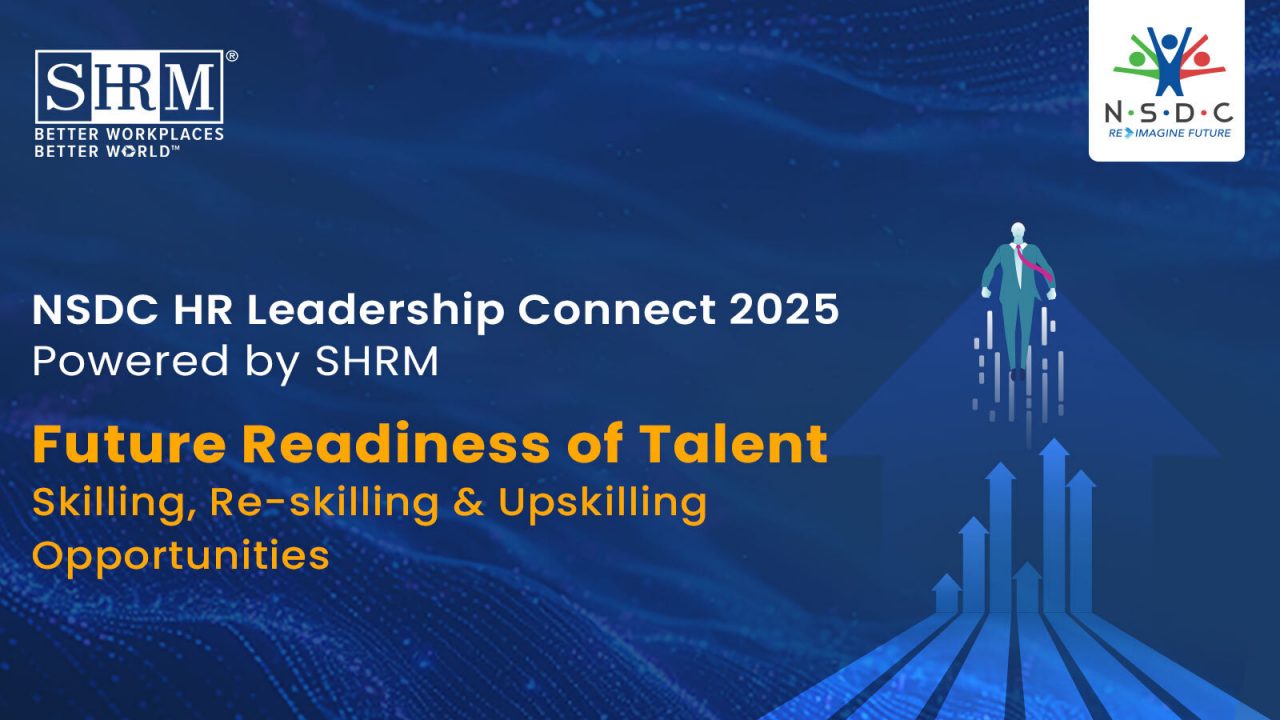The NSDC HR Leadership Connect 2025 was an exciting event that engaged industry leaders to discuss emerging trends in India’s education and skills landscape. The event, held in Bangalore, featured a focus group discussion with seasoned HR leaders from the semiconductor industry. They dived deep into the importance of ‘Future Readiness of Talent: Skilling, Re-skilling, and Upskilling Opportunities.’
The discussion focused on finding new and innovative ways to prepare for the future and achieve business objectives. Participants addressed important challenges and shared ideas to help improve the skills of our workforce in a rapidly changing world.
The main message was clear: we must prepare for the challenges and opportunities ahead. This blog highlights key takeaways from Mr. Ved Mani Tiwari, Chief Executive Officer and Managing Director of NSDC, whose inspiring address motivated everyone to make a difference in the skills ecosystem.
Transforming India's Education and Skills Ecosystem
Mr. Ved Mani Tiwari discussed the significant progress NSDC has made in partnership with the government. He talked about the shift from a rigid education system to one more adaptable and capable of early intervention. This new approach aims to prepare the nation for the future by integrating education with practical experience and workplace exposure.
APAR ID and Academic Bank of Credit
A key highlight of Mr. Tiwari's address was introducing the APAR ID and the Academic Bank of Credit. This innovative system allows students to accrue credits across various dimensions, including:
Educational: Classroom-based learning.
Internships & Projects: Practical experience and hands-on learning.
Time Spent in Organizations: On-the-job experience that can be accumulated as credits.
Think of a future where your learning journey advances your career and personal growth—where your knowledge and skills are your greatest assets, much like a balance sheet reflecting your intellectual wealth.
Mr. Tiwari has a bold vision for the future of education and skills development. He believes the National Credit Framework will empower people to use their credits to pursue exciting new opportunities, such as diplomas and degrees. Furthermore, he hopes for a future where personal ‘balance sheets’ driven by intellectual property become key assets, with NSDC playing a crucial role in facilitating this transformation. He emphasized the need to integrate the education system with the workplace to achieve this goal, create talent bridges, and adopt continuous reskilling across sectors.
Focusing on the Semiconductor Industry
With the shift towards a ‘SMART’ world, the semiconductor industry is becoming increasingly important. With the growing demand for smarter, low-power, and more sustainable technologies, such as AI-enabled chips and smart cars, the industry can grow significantly.
Key Pillars for Success
Mr. Tiwari outlined three critical pillars essential for the semiconductor industry's success:
Capital
Technology
Talent
While India has made significant progress in mastering capital and technology, talent is essential to ensure the industry's success.
Challenges in the Semiconductor Industry
Several challenges were highlighted in Mr. Tiwari's address, particularly concerning skilled talent:
Skills Gap: There is a significant gap between the skills that the industry requires, the readiness of young hires and academic institutions.
Hands-On Experience: Young hires often lack the practical skills and hands-on experience required to thrive, resulting in a longer time to productivity.
High-Tech Infrastructure: Owing to a lack of advanced labs and skilled faculty in academic institutions, the development of essential skills is often ignored.
Awareness and Branding: Students often overlook the semiconductor industry as they are more inclined toward AI and IT jobs, leading to a talent gap.
Opportunities for Improvement
Mr. Tiwari identified several opportunities to address these challenges:
Scalable Partnerships: NSDC can help scalable partnerships between academia and industry.
Skill Development: A deliberate approach focusing on specific parts of the semiconductor value chain.
Hands-On Experience: Facilitating opportunities for students to gain practical experience through internships and organizational visits.
Faculty Training: Investing in faculty training and college facilities to support advanced labs and practical learning.
Mentorship Programs: Implementing mentorship programs where young professionals are mentored by seasoned professionals.
Brand Awareness: Enhancing the brand awareness and positioning of the semiconductor industry to attract talent.
Aligning Expectations: Addressing the gap between Gen Z's desire for quick wins and the long-term investment required in the semiconductor industry.
Additionally, he highlighted the importance of offering Tier 1 quality education and training to Tier 2 and Tier 3 colleges, as these institutions serve as organizations' primary talent pools. Ensuring that internships focus on experiential learning will help bridge the gap between academic knowledge and industry requirements.
Conclusion
The NSDC HR Leadership Connect 2025 highlighted the need to combine education with practical experience and work exposure. NSDC aims to close the gap between academic language and what industries need by building strong partnerships, developing skills, and improving facilities. Success in the semiconductor industry will rely on mastering funding, technology, and especially talent. With the right plans and teamwork, India is set to become a global leader in the semiconductor field.
An organization run by AI is not a futuristic concept. Such technology is already a part of many workplaces and will continue to shape the labor market and HR. Here's how employers and employees can successfully manage generative AI and other AI-powered systems.




